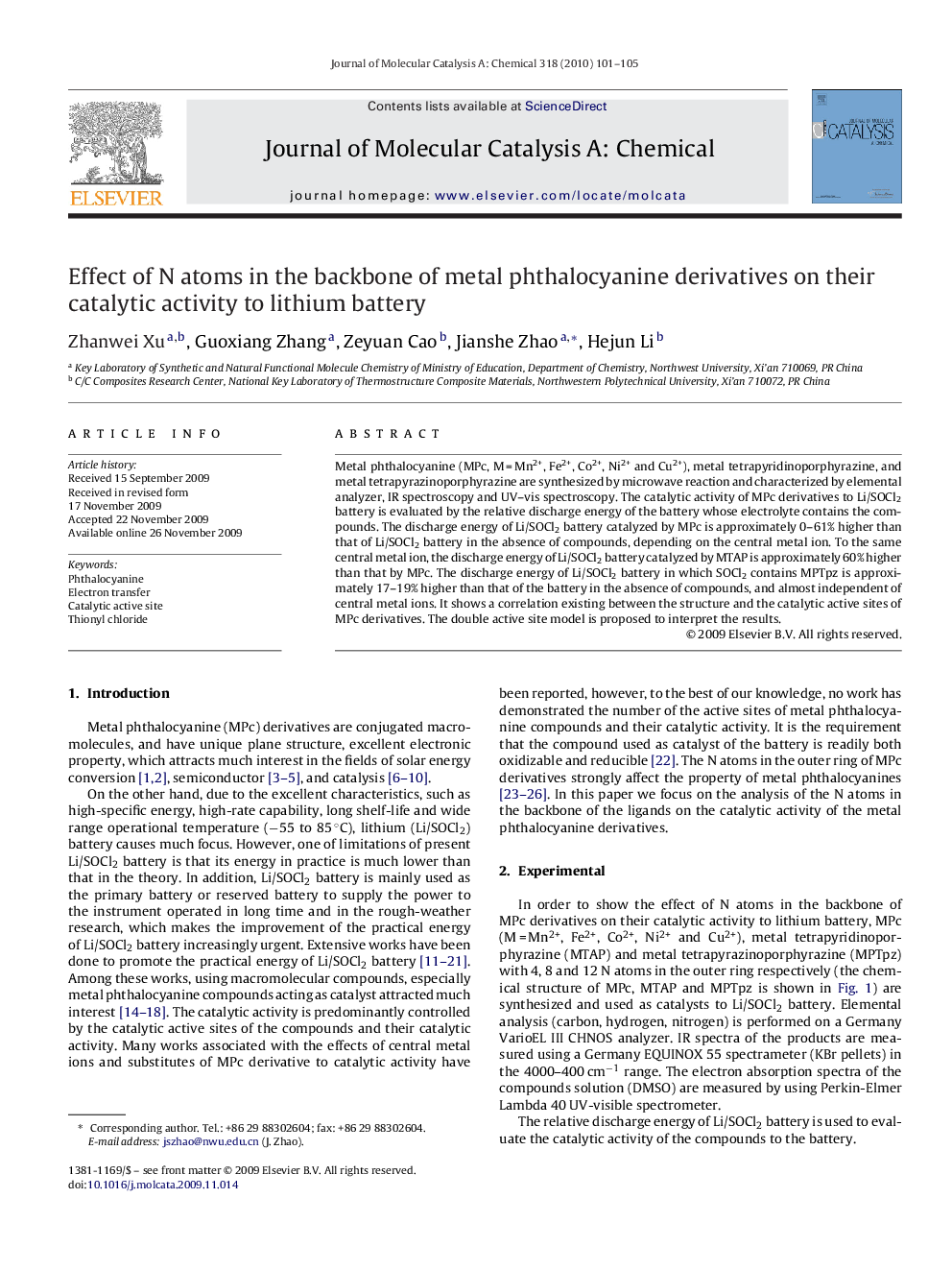| Article ID | Journal | Published Year | Pages | File Type |
|---|---|---|---|---|
| 66861 | Journal of Molecular Catalysis A: Chemical | 2010 | 5 Pages |
Metal phthalocyanine (MPc, M = Mn2+, Fe2+, Co2+, Ni2+ and Cu2+), metal tetrapyridinoporphyrazine, and metal tetrapyrazinoporphyrazine are synthesized by microwave reaction and characterized by elemental analyzer, IR spectroscopy and UV–vis spectroscopy. The catalytic activity of MPc derivatives to Li/SOCl2 battery is evaluated by the relative discharge energy of the battery whose electrolyte contains the compounds. The discharge energy of Li/SOCl2 battery catalyzed by MPc is approximately 0–61% higher than that of Li/SOCl2 battery in the absence of compounds, depending on the central metal ion. To the same central metal ion, the discharge energy of Li/SOCl2 battery catalyzed by MTAP is approximately 60% higher than that by MPc. The discharge energy of Li/SOCl2 battery in which SOCl2 contains MPTpz is approximately 17–19% higher than that of the battery in the absence of compounds, and almost independent of central metal ions. It shows a correlation existing between the structure and the catalytic active sites of MPc derivatives. The double active site model is proposed to interpret the results.
Graphical abstractN atoms in the backbone strongly affect their catalytic sites and catalytic activity of MPc derivatives to Li/SOCl2 battery. The discharge energy of Li/SOCl2 battery catalyzed by MPcs and MTAPs depending on the central metal ion of the compounds, while it catalyzed by MPTpzs almost independent of central metal ions. MTAPs are the most effective catalysts among them.Figure optionsDownload full-size imageDownload high-quality image (87 K)Download as PowerPoint slide
